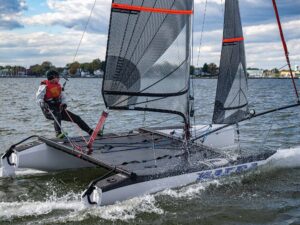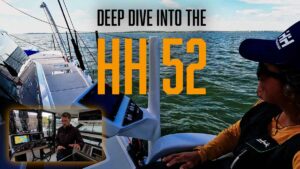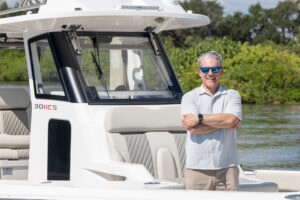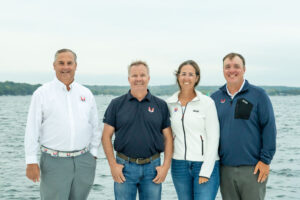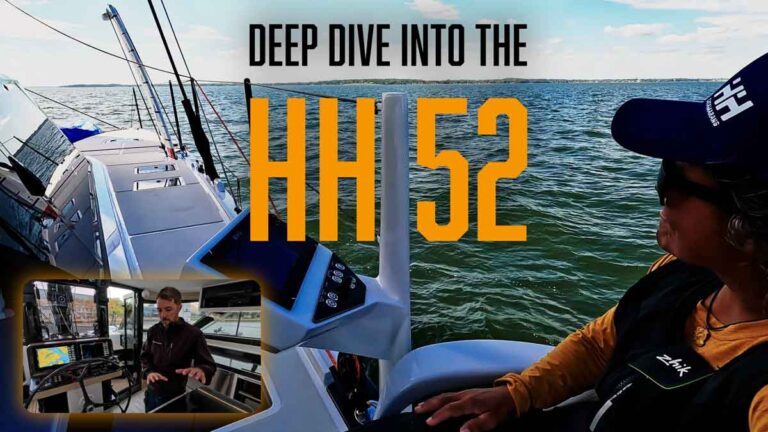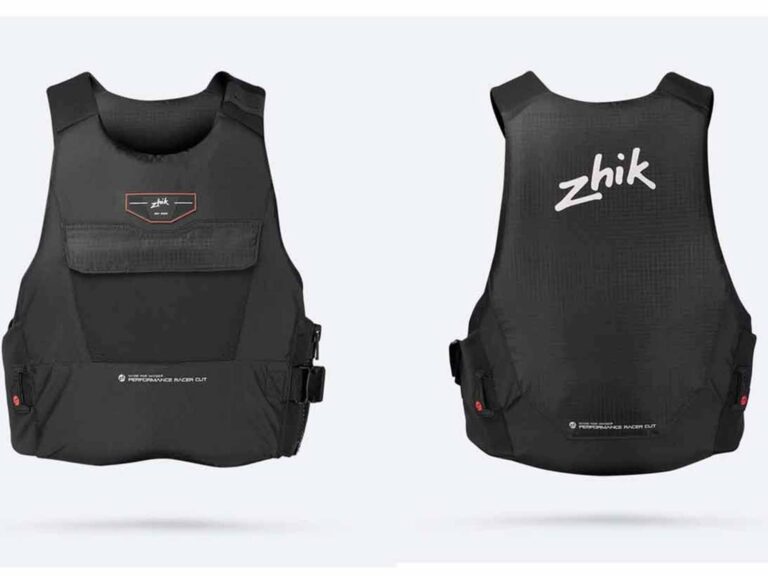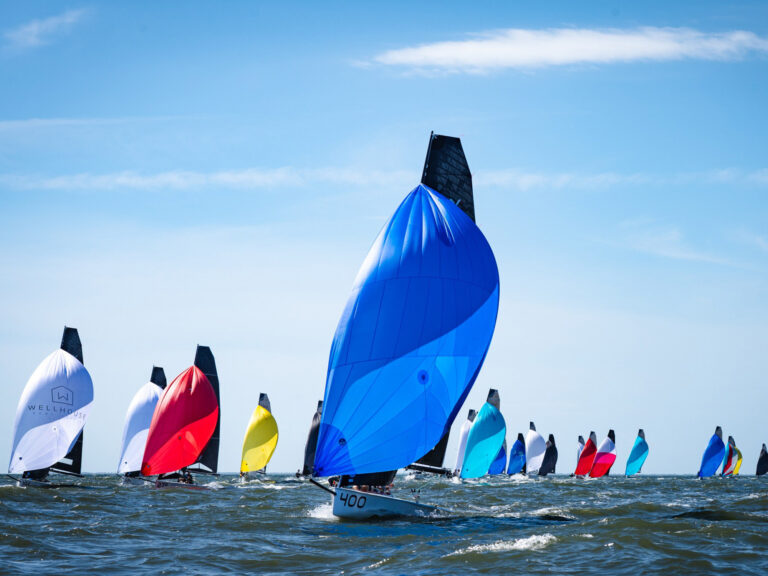The Farr 395 may be just the boat many sailors have been looking for. By addressing the desires of sailors who dont want to sail flat-out race boats or sluggish cruisers, Farr Yacht Design and Carroll Marine have come up with a compromise that doesnt feel like one. The performance junkie has only to hoist the large asymmetric, look for a puff, and watch the speed jump. The comfort-minded soul needs only to go below and stand upright (yes, upright, even if youre over six feet tall), gaze at the comfortable, wood-trimmed interior, and breath a sigh of relief.
This boat is clearly designed to take advantage of the surging popularity of owner-driver classes, such as the Farr 40 and 1D35, while also appealing to the growing sprit-boat, performance-cruiser market. The rules that govern the class are straightforward: owners drive, the boats carry only five sails (two kites, two headsails, one main), theres a two-pro limit, and those pros cannot be paid to race. Rising from this foundation is an easily handled, fun to sail, 40-footer.
How the boat is rigged and equipped is what really makes it work for both racers and cruisers. Operating under the theory that simple is both fast and easier to sail short-handed, the 395 has a non-overlapping sail plan carried by a carbon-fiber mast with two sets of swept spreaders. There are no checkstays or running backstays. The non-articulating carbon pole, which retracts into a sealed box down below, should get a design award for engineering- sprit boats are famous for allowing water in through the pole gasket. To reduce windage and the potential for damage from saltwater or wave impact, the roller-furling headsail drum is mounted belowdecks in the front of a deep chain locker. The designers and engineers also made the bow safer by placing cleats on either side of the chain locker that can be recessed when not in use. All halyards and control lines lead back to a deep, roomy cockpit that can be easily optimized for racing by removing two cockpit locker/seats.
On a perfect, early June afternoon, with a crew of five, we took hull No. 8 for a test sail on Rhode Islands Narragansett Bay. We hoisted the batten-car-equipped main with the powered cabin-top winch (a nice option), did the same for the non-overlapping headsail, and sailed upwind in a light southwesterly. One crewmember hopped off to drive the photo boat and two went below to use their cell phones, leaving two of us sailing the boat- both in light breezes and later when the breeze piped up. The mainsail controls are placed immediately in front of the wheel, convenient for a trimmer to use while comfortably perched on the cockpit coaming, but also accessible for a singlehanding helmsman.
The sea breeze came in at about 16 knots, and even without crew stacking the rail the 395 behaved well as long as the traveler and mainsheet were played properly. The steering is balanced, has a great feel, and will give drivers a feeling of confidence and power. Youll be able to toss this boat around on a starting line without too much worry.
The grins really begin to appear when the bowsprit is extended and the asymmetric goes up. We hoisted the larger of the two kites, a 1,614-square-foot sail. (A 1,291-square-foot spinnaker can be used on windier days.) With the wind in the low to mid teens, it wasnt difficult to get the boatspeed to stay at 9 knots. The cell-phone users came on deck to enjoy the perfect spinnaker sailing conditions, and with four experienced sailors timing the releases well and running the clew around, the jibes were fluid. Practicing this maneuver a few times will turn even neophyte A-sail crewmembers into confident sail handlers. A spinnaker sock will allow jibes and douses to be handled by an even shorter-handed crew.
Anticipating worldwide popularity, the Farr 395s are built to the European Unions Mark CE (Conformit 8e Europeene) standards. These standards stipulate some sensible safety features, such as a minimum companionway sill height and an access port in the engine box for extinguishing fires without opening the engine compartment.
The boat is also available with a number of options such as an aft owners stateroom, a 510″ shoal draft keel, radar (on a carbon pole, of course), refrigeration, and dodger. The base price including sails, electronics, and ultra-leather upholstery is $280,000.
After our sail, while motoring for the barn at 8 knots, we went down below, looked around, and had the thought that even the most dedicated racing fanatic- one that regards cruising as something less than appealing- might seriously consider doing so with the 395. Large aft bunks, private cabin forward, a sensible galley to starboard, and a well-set-up nav station to port- all nicely finished- make down below more of a home than a hideout, a place where one could comfortably spend a fog-bound week on the coast of Maine cruising with the family. Of course, that week might be just as well spent with the right group of folks racing to Bermuda or Hawaii.

